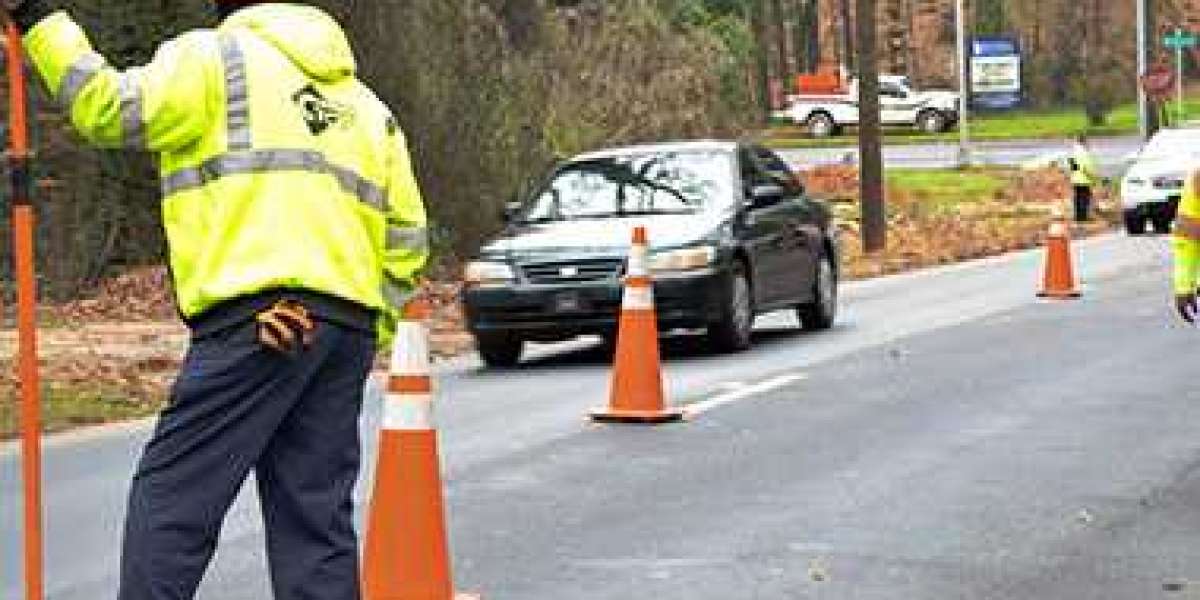Introduction
Traffic management services are vital for maintaining smooth and efficient transportation systems in urban and rural areas alike. They encompass a range of strategies and technologies designed to optimize traffic flow, enhance safety, and improve overall transportation efficiency. This article offers an in-depth exploration of traffic management services, including their importance, key strategies, technologies, and future trends. By providing a thorough understanding, we aim to surpass existing information and offer valuable insights into the field.
Chapter 1: What Are Traffic Management Services?
1.1 Definition and Scope
Traffic management services refer to the planning, coordination, and control of traffic flow to ensure safe and efficient transportation. These services are designed to address issues such as congestion, accidents, and delays by implementing various strategies and technologies. They play a crucial role in urban and rural transportation networks, contributing to the overall efficiency of the transportation system.
1.2 Importance of Traffic Management Services
Traffic management services are essential for several reasons:
- Safety: They help prevent accidents and ensure the safety of drivers, pedestrians, and cyclists.
- Efficiency: They improve traffic flow, reduce travel time, and minimize delays.
- Environmental Impact: By reducing congestion, traffic management services help lower vehicle emissions and contribute to environmental sustainability.
- Economic Benefits: Efficient traffic management can reduce costs associated with delays, fuel consumption, and vehicle wear and tear.
1.3 Key Objectives
The primary objectives of traffic management services include:
- Optimizing Traffic Flow: Ensuring that vehicles move smoothly and efficiently through the transportation network.
- Enhancing Safety: Implementing measures to reduce accidents and protect all road users.
- Reducing Congestion: Addressing traffic bottlenecks and minimizing delays.
- Promoting Sustainability: Supporting eco-friendly transportation practices and reducing environmental impact.
Chapter 2: Strategies for Effective Traffic Management
2.1 Traffic Control Measures
Traffic control measures are fundamental to managing traffic flow and ensuring safety. They include:
- Traffic Signals: Regulate vehicle and pedestrian movement at intersections to prevent collisions and manage traffic flow.
- Road Signs: Provide essential information and instructions to drivers, helping them navigate safely and efficiently.
- Speed Limits: Set maximum speeds to ensure safe driving conditions and reduce accidents.
2.2 Intelligent Transportation Systems (ITS)
ITS involves the use of advanced technologies to improve traffic management. Key components include:
- Traffic Cameras: Monitor traffic conditions in real time, providing valuable data for traffic management and incident detection.
- Variable Message Signs (VMS): Display real-time information about traffic conditions, road closures, and hazards to drivers.
- Adaptive Traffic Signals: Adjust signal timings based on current traffic flow to reduce congestion and improve traffic efficiency.
2.3 Traffic Flow Management Techniques
To optimize traffic flow, several techniques are employed:
- Ramp Metering: Controls the rate at which vehicles enter highways, preventing congestion and improving traffic flow.
- High Occupancy Vehicle (HOV) Lanes: Designated lanes for vehicles with multiple passengers to reduce traffic volume and encourage carpooling.
- Traffic Calming Measures: Includes speed bumps, roundabouts, and chicanes to slow down traffic and improve safety in residential areas.
2.4 Incident Management
Incident management involves strategies to address accidents and other disruptions quickly:
- Emergency Response Plans: Coordinated efforts to manage traffic and respond to incidents efficiently.
- Roadside Assistance: Provides support to stranded vehicles and clears accidents swiftly to minimize their impact on traffic.
- Real-Time Updates: Communicates information about incidents to drivers through various channels, helping them avoid affected areas.
Chapter 3: Technologies in Traffic Management Services
3.1 Automated Traffic Management Systems
Automated systems use advanced technologies to manage traffic with minimal human intervention:
- Traffic Management Software: Analyzes traffic data to provide insights and support decision-making.
- Sensor Networks: Collect data on traffic volume, speed, and congestion, enabling better traffic management.
- Machine Learning Algorithms: Predict traffic patterns and optimize traffic signal timings based on historical and real-time data.
3.2 Smart Traffic Lights
Smart traffic lights adapt to real-time traffic conditions to improve flow and reduce delays:
- Dynamic Signal Timing: Adjusts the duration of green and red lights based on current traffic volume.
- Traffic Detection Systems: Uses sensors to detect the presence of vehicles and pedestrians, optimizing signal timings accordingly.
3.3 Connected Vehicles
Connected vehicle technology enables vehicles to communicate with each other and with traffic management systems:
- Real-Time Data Sharing: Vehicles exchange information about their speed, location, and direction, enhancing traffic management and safety.
- Enhanced Safety Features: Provides alerts about potential hazards and improves collision avoidance through communication with other vehicles and infrastructure.
3.4 Advanced Traffic Control Systems
These systems offer comprehensive solutions for managing complex traffic scenarios:
- Integrated Traffic Management Systems (ITMS): Combine various technologies and data sources to provide a holistic view of traffic conditions and enable coordinated management.
- Adaptive Traffic Control Systems (ATCS): Continuously adjust traffic signals based on real-time traffic data to optimize flow and reduce congestion.
Chapter 4: Traffic Management Services in Practice
4.1 Case Study: Owl Watch Security Services
Owl Watch Security Services is renowned for its premier traffic management solutions, showcasing effective practices in the field:
- Traffic Flow Optimization: Implements strategies to ensure smooth movement of vehicles in high-traffic areas, reducing delays and improving efficiency.
- Safety Enhancements: Utilizes advanced technologies and measures to protect pedestrians and reduce accidents.
- Technology Integration: Employs cutting-edge traffic management systems to monitor and control traffic effectively.
4.2 Urban vs. Rural Traffic Management
Traffic management services vary between urban and rural areas:
- Urban Areas: Focus on managing high traffic volumes, reducing congestion, and ensuring pedestrian safety.
- Rural Areas: Emphasize maintaining road quality, managing seasonal traffic variations, and ensuring safety on less-developed roads.
4.3 Future Trends in Traffic Management Services
The field of traffic management is evolving with new technologies and trends:
- Autonomous Vehicles: Expected to revolutionize traffic management by reducing human error and optimizing traffic flow.
- Smart Cities: Integrating traffic management with other urban systems to create more efficient and livable cities.
- Sustainable Practices: Emphasizing eco-friendly solutions and promoting alternative transportation modes to reduce environmental impact.
Chapter 5: Challenges and Solutions in Traffic Management Services
5.1 Common Challenges
Traffic management services face several challenges, including:
- Congestion: Increasing traffic volumes and inadequate infrastructure can lead to gridlock and delays.
- Accidents: Ensuring safety and effective response to incidents can be challenging in busy or complex traffic environments.
- Technology Integration: Keeping up with rapid technological advancements and ensuring interoperability among different systems.
5.2 Solutions and Best Practices
To address these challenges, traffic management services can implement:
- Comprehensive Planning: Develop long-term strategies for infrastructure improvements and technology upgrades.
- Public Engagement: Involve the community in traffic management decisions and promote awareness about traffic safety and efficiency.
- Continuous Improvement: Regularly assess and update traffic management practices based on data, feedback, and technological advancements.
Conclusion
Traffic management services are essential for ensuring safe, efficient, and sustainable transportation. By employing a range of strategies and leveraging advanced technologies, traffic management services address challenges such as congestion, safety, and efficiency. As technology continues to advance, traffic management will evolve to meet the needs of modern transportation systems, improving the quality of life for all road users. This comprehensive overview provides valuable insights into traffic management services, offering a deep understanding of their importance and impact on our daily lives.
Chapter 6: Frequently Asked Questions (FAQs)
6.1 What are Traffic Management Services?
Traffic management services involve planning, coordinating, and controlling traffic flow to ensure safe and efficient transportation. They include strategies and technologies to optimize road use, reduce congestion, and enhance safety.
6.2 How do Traffic Management Services improve safety?
Traffic management services improve safety by implementing traffic control devices, monitoring traffic conditions, and managing incidents effectively. These measures help prevent accidents and protect all road users.
6.3 What technologies are used in Traffic Management Services?
Technologies used in traffic management services include traffic cameras, variable message signs, adaptive traffic signals, sensor networks, and connected vehicle systems. These technologies help monitor and control traffic efficiently.
6.4 How do Traffic Management Services address congestion?
Traffic management services address congestion through techniques such as ramp metering, high occupancy vehicle lanes, and traffic calming measures. These strategies optimize traffic flow and reduce delays.
6.5 What are the future trends in Traffic Management Services?
Future trends in traffic management services include the integration of autonomous vehicles, development of smart cities, and implementation of sustainable practices. These trends aim to enhance traffic efficiency and reduce environmental impact.








